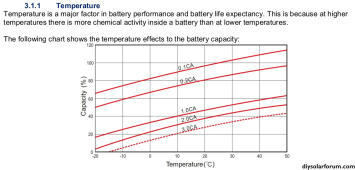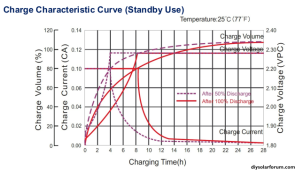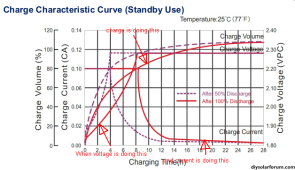dborn
New Member
Hi, another newbie here.
I have a power backup system (no solar) using a 24vdc 6kW split-phase inverter charger and 6 x 100Ah 12v AGM batteries.
The batteries are currently connected using short 4/0 cables in between each battery post. The connections to the inverter are diagonal (farthest [+] to closest [-] ) to try and keep batteries as balanced as possible. My system only gets used when there is a power outage and gets recharged back to 100% as soon as power is back.
Should I invest in busbars and active balancers to make my batteries last as long as possible or is my current setup with separate cables good enough?
I am considering buying tinned copper 30mm x 5mm bars on Amazon to build my own busbars to connect each battery directly to them, to parallel connect 3 batteries in series with another set of 3 parallel batteries. I'm thinking this would keep all batteries as well balanced to each other as possible, charging and discharging. Perhaps adding an active battery balancer to balance each set of 3 batteries with each other.
Useful? waste of money?
My 6 batteries would mostly go from 100% down to 30% and then back to 100% perhaps 5-6 times a year as this is a "whole-house UPS" that I manually switch on and off when it is needed.
Thanks
I have a power backup system (no solar) using a 24vdc 6kW split-phase inverter charger and 6 x 100Ah 12v AGM batteries.
The batteries are currently connected using short 4/0 cables in between each battery post. The connections to the inverter are diagonal (farthest [+] to closest [-] ) to try and keep batteries as balanced as possible. My system only gets used when there is a power outage and gets recharged back to 100% as soon as power is back.
Should I invest in busbars and active balancers to make my batteries last as long as possible or is my current setup with separate cables good enough?
I am considering buying tinned copper 30mm x 5mm bars on Amazon to build my own busbars to connect each battery directly to them, to parallel connect 3 batteries in series with another set of 3 parallel batteries. I'm thinking this would keep all batteries as well balanced to each other as possible, charging and discharging. Perhaps adding an active battery balancer to balance each set of 3 batteries with each other.
Useful? waste of money?
My 6 batteries would mostly go from 100% down to 30% and then back to 100% perhaps 5-6 times a year as this is a "whole-house UPS" that I manually switch on and off when it is needed.
Thanks






